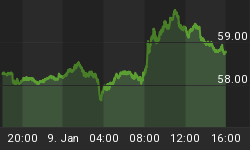It Isn't That Complicated!
Global Economics is not as complicated as the Ivy trained Keynesian economists would have you believe.
As Goldman Sachs gleefully illustrates, the world is presently divided into two financially warring camps.
- The Emerging Markets (EM) who have Inflation problems and
- The Developed Markets (DM) that have a Disinflation to Deflation problem.


Don't Be Confused by the Mis-directing Labels
It actually is not an "Emerging Markets" problem but rather a "Peripheral Nations" problem.
The Peripheral nations are those nations who are not yet fully "Industrial" nations but rather still "Resource" nations. Industrial nations consume Resources and hence "Resource" nations are very dependent on the economies of the "Industrial" economies and are desperately trying to get there because it historically offered higher levels of employment (a big political problem in Resource nations), higher value add product pricing and economic stability (versus the roller coaster commodity cycles).
The Emerging Markets have become the Economy
But something has quietly happened over the last decade other than continuous financial turmoil and "bubble" economics.
The willingness of the Emerging Markets (Peripheral Nations) to accept the currency that is being endlessly printed to finance economies, that consume more than they produce, has allowed an over expansion and over-reach by these EM's trying to become Industrial nations.

Excess Capacity & Insufficient Aggregate Demand
As a consequence today we are left with Output Gaps in the DM's and Current Account payment deficits in the Peripheral nations.

A Pathway to a Globalization Trap
All of this has placed the world on a destructive path towards what can best be termed a "Globalization Trap" and eventually a global fiat currency crisis. The road map is easy to discern and quite evident if you actually study the sign posts without wearing Keynesian filtering glasses and a dose of common sense

Profound Implications to Global Financial Markets
The road map has profound implications for the financial markets as economies of both the Developed and Emerging Economies move through an almost preordained cycle shown and labeled in the chart below.

Check Out Our Extensive Library of Videos
Video Library
YouTube Channel
20-40 Minute Shows with 25-50 Supporting Slides















